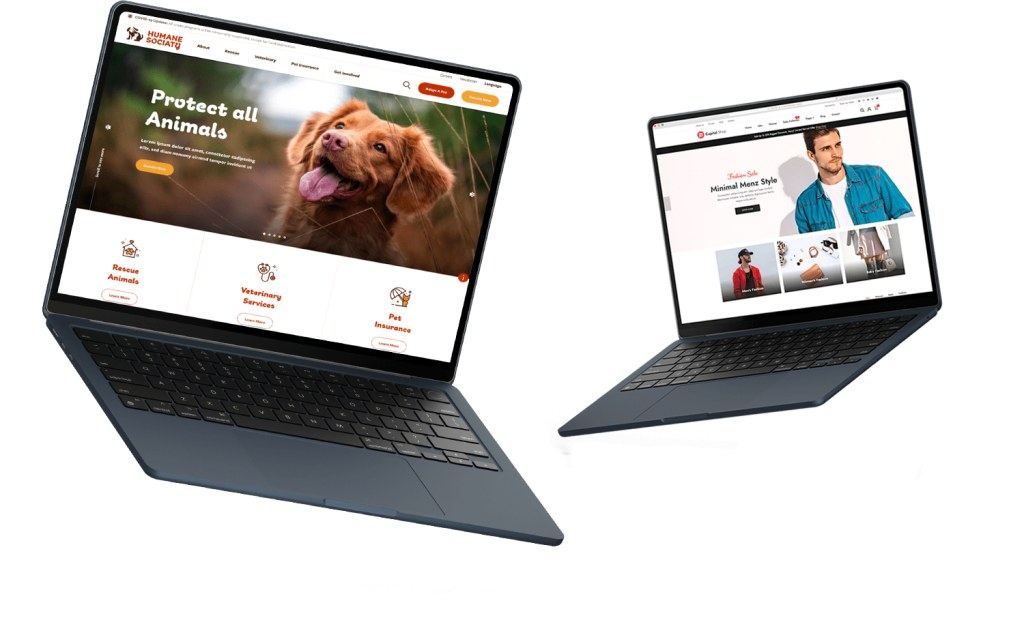The Power of Social Proof in Digital Marketing: How to Leverage Reviews and Testimonials
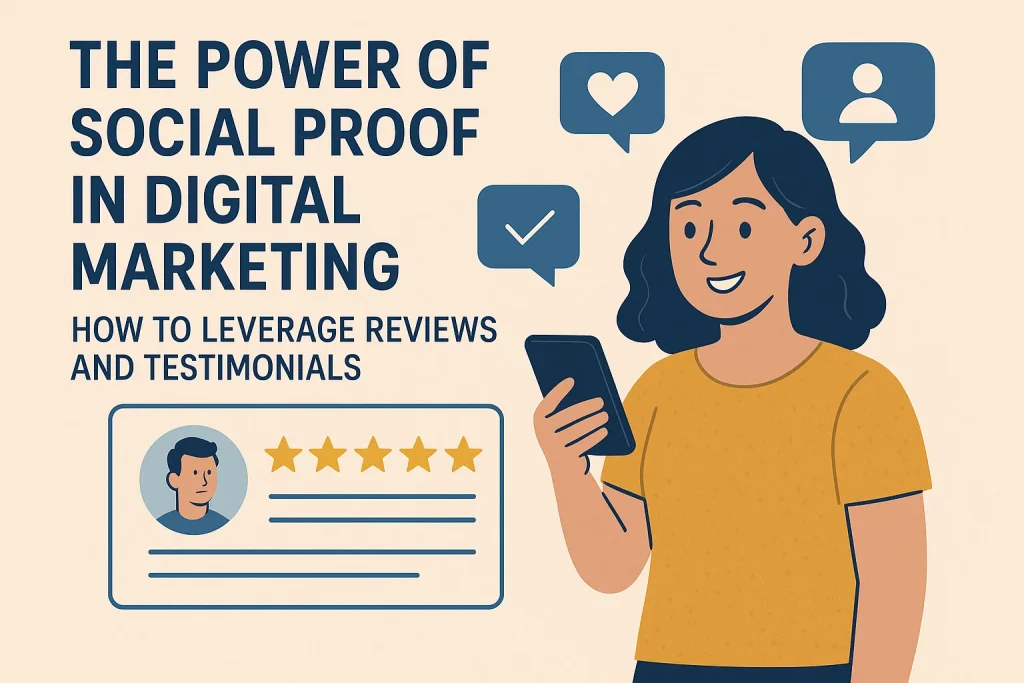
In today’s competitive digital landscape, building trust with potential customers is crucial for any business. Consumers are constantly bombarded with advertisements, promotions, and brand messages, making it harder for companies to stand out and build credibility. One of the most effective ways to influence purchasing decisions and increase brand trust is through social proof—the concept that people rely on the actions and opinions of others to guide their decisions. Social proof is a powerful psychological phenomenon that plays a significant role in digital marketing. It is the idea that individuals will conform to what they believe others are doing. In the context of online shopping or services, this often manifests as customer reviews, testimonials, user-generated content, and social media endorsements. In this blog, we’ll explore the power of social proof in digital marketing, how it can be leveraged to build credibility, and actionable steps to make the most of customer reviews and testimonials to drive sales and brand loyalty. What is Social Proof and Why Does it Matter? Social proof is the idea that people are influenced by the actions, behaviors, or opinions of others when making decisions. This concept has been around for decades, but in the age of the internet, it has taken on new forms—mainly through reviews, testimonials, and user-generated content. Why does social proof matter so much in digital marketing? Different Types of Social Proof and How to Use Them There are several types of social proof you can use in your digital marketing efforts. Let’s take a closer look at each: 1. Customer Reviews Customer reviews are one of the most common and effective forms of social proof. They allow potential customers to see firsthand accounts of what others think about your product or service. Positive reviews can significantly impact your SEO and conversion rates, making it essential to encourage reviews from your satisfied customers. Tip: Respond to both positive and negative reviews promptly. Acknowledge the feedback, thank customers for their input, and address any concerns professionally. This shows that you care about customer satisfaction. 2. Testimonials Testimonials are another powerful form of social proof. Unlike reviews, which tend to be brief and more general, testimonials are often longer, more detailed accounts of customer experiences. These can include specific stories, challenges faced, and how your product or service helped solve those challenges. Tip: Use testimonials that highlight specific benefits of your product or service. Rather than generic “great service” reviews, focus on stories where customers explain how your product helped solve a particular problem. 3. User-Generated Content (UGC) User-generated content (UGC) is any content created by customers or users that is shared on social media, blogs, or other platforms. This includes photos, videos, unboxing experiences, and blog posts about your brand or product. UGC acts as a form of social proof because it showcases real people using and enjoying your product. Tip: Run UGC campaigns or contests to motivate customers to share their experiences with your product. Reward participants with discounts or prizes to boost engagement. 4. Influencer Endorsements Influencer marketing continues to rise, and influencer endorsements act as a powerful form of social proof. When respected individuals in your industry or niche promote your brand, they validate your products and services to their followers. Tip: Micro-influencers (those with smaller but highly engaged audiences) can provide more authentic, impactful endorsements and may offer a higher return on investment for businesses with smaller budgets. 5. Social Media Mentions and Shares Social media provides a platform for customers to share their experiences, review products, and recommend brands to their networks. Social proof in the form of shares, likes, comments, and mentions can significantly impact your brand’s visibility and credibility. Tip: Create a branded hashtag and encourage users to use it when posting content related to your product. This will help you track and aggregate social proof from all your social channels. 6. Expert and Celebrity Endorsements Expert or celebrity endorsements can also provide social proof, especially if the expert or celebrity has a strong following in your industry. Their endorsement lends credibility and authority to your product, making it more appealing to potential customers. Tip: Leverage the endorsement to create engaging content that showcases the expert or celebrity using your product or service. How to Use Social Proof Effectively in Your Marketing Strategy To fully leverage the power of social proof, consider these best practices: Conclusion: Building Trust with Social Proof In digital marketing, social proof is one of the most powerful tools businesses can use to build trust, increase credibility, and drive conversions. By leveraging reviews, testimonials, user-generated content, and influencer endorsements, you can create a more engaging and trustworthy brand experience for your customers. In 2025 and beyond, social proof will continue to play a crucial role in digital marketing, and businesses that utilize it effectively will be poised for greater success. At Speed Dot 360, we specialize in helping businesses integrate social proof into their digital marketing strategies, enhancing their online reputation and boosting customer trust. Contact us today to learn how we can help you leverage the power of social proof to grow your business. FAQ Section Q1: What is social proof in digital marketing?Social proof is the influence that the actions or opinions of others have on potential customers. It can come in the form of reviews, testimonials, user-generated content, or social media mentions, helping to build trust and credibility. Q2: How can I get more customer reviews for my business?Encourage satisfied customers to leave reviews by making it easy for them to do so, offering incentives like discounts or freebies, and sending follow-up emails requesting feedback after a purchase. Q3: How do testimonials differ from reviews?Testimonials are typically longer, more detailed accounts of a customer’s experience with your brand, often provided by satisfied customers or clients, while reviews are shorter, informal feedback shared on platforms like Google or Yelp. Q4: How can I encourage user-generated content?You can encourage UGC by running contests, asking customers to tag your brand on social
How AI Is Shaping the Future of Digital Marketing
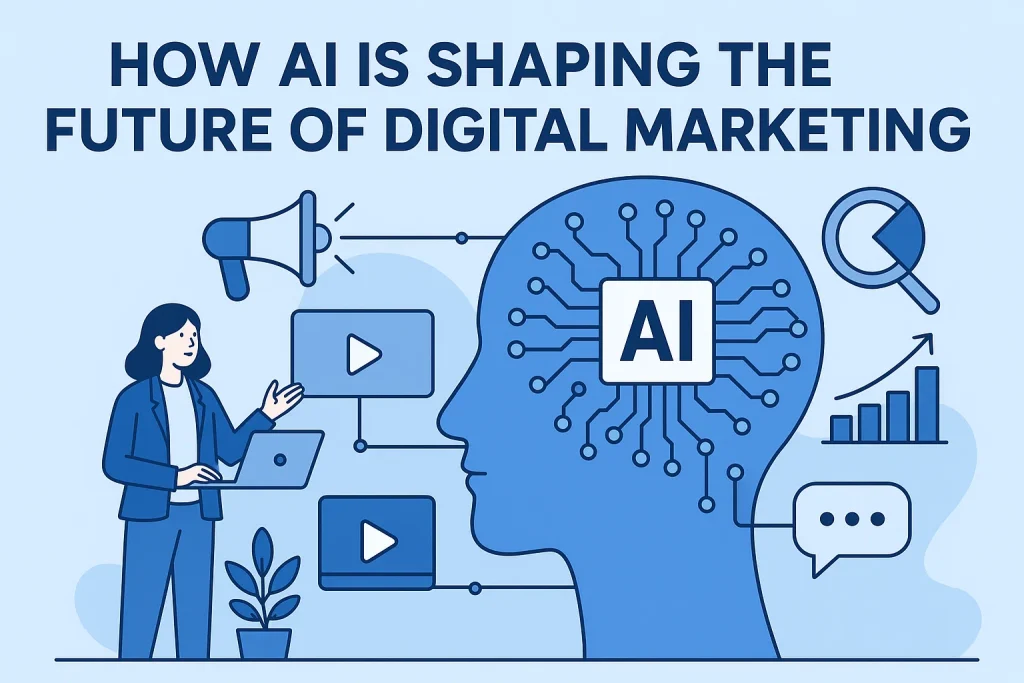
Artificial Intelligence (AI) is no longer just a buzzword—it’s a transformative force that is revolutionizing industries across the globe, particularly in digital marketing. As technology continues to evolve, AI is becoming an integral tool for businesses aiming to stay ahead of the competition, improve customer experiences, and drive business growth. In this blog, we’ll explore how AI is shaping the future of digital marketing and why businesses need to embrace it to stay competitive in 2025 and beyond. What is AI in Digital Marketing? AI in digital marketing refers to the use of intelligent algorithms and machine learning models to analyze data, automate tasks, optimize campaigns, and provide personalized experiences to consumers. From predictive analytics to AI-powered chatbots, AI is enhancing every aspect of digital marketing, allowing businesses to create smarter, more efficient campaigns. In 2025, AI is expected to be at the forefront of digital marketing strategies, making it easier for businesses to meet consumer demands and improve ROI. Here’s how AI is making a significant impact on the industry. 1. Personalized Customer Experiences at Scale One of the most exciting ways AI is transforming digital marketing is through personalization. Traditionally, businesses would segment their audience into broad categories and create one-size-fits-all campaigns. However, AI allows marketers to personalize content and experiences on an individual level, at scale. Impact: Personalized marketing not only enhances the customer experience but also drives higher engagement and conversion rates. By delivering the right message at the right time, businesses can boost customer satisfaction and brand loyalty. 2. AI-Powered Chatbots for Real-Time Customer Engagement AI-driven chatbots are becoming a staple in customer engagement strategies. These intelligent systems can simulate conversations with users in real-time, providing instant support, answering frequently asked questions, and guiding users through the sales funnel. Impact: Chatbots enhance the customer experience by providing quick, accurate, and personalized interactions. This not only reduces response times but also improves conversion rates by guiding potential customers to the information they need. 3. Predictive Analytics for Smarter Decision-Making AI’s ability to process vast amounts of data quickly and accurately has made predictive analytics an essential tool for digital marketers. By analyzing historical data, AI can predict future consumer behavior, enabling businesses to make more informed decisions about marketing strategies. Impact: Predictive analytics empowers businesses to optimize their marketing campaigns by focusing on the most profitable customers, improving ROI, and enhancing customer retention strategies. 4. AI-Driven Content Creation Content creation is one of the most time-consuming tasks in digital marketing. With the rise of AI, marketers now have access to tools that can help automate and streamline content creation. AI is capable of generating written content, images, videos, and even social media posts. Impact: AI-driven content creation not only speeds up the content production process but also allows for more dynamic and tailored content that resonates with the audience, increasing engagement. 5. Automated Campaign Optimization AI has the ability to automate and optimize digital marketing campaigns in real-time. Traditional marketing strategies involved constant manual adjustments and A/B testing to find the most effective approaches. With AI, marketers can automate these tasks and ensure that campaigns are continually optimized. Impact: Automated optimization reduces the time and effort marketers need to spend adjusting campaigns manually, leading to higher efficiency, lower costs, and improved campaign performance. 6. Voice Search and AI-Driven SEO As voice search continues to grow, AI is playing a crucial role in shaping SEO strategies. Voice search queries are often longer and more conversational than traditional text-based queries, making it essential for businesses to adapt their SEO strategies. Impact: AI-powered SEO tools make it easier for businesses to optimize their websites for voice search, improving their chances of ranking higher and getting discovered by voice search users. 7. Social Media Listening and Sentiment Analysis AI is revolutionizing social media marketing by enabling businesses to understand consumer sentiment and track brand mentions across social media platforms. Through social listening, AI can help businesses monitor conversations about their brand, competitors, and industry. Impact: Social media listening powered by AI helps businesses respond to customer concerns, capitalize on trends, and maintain a positive brand image, enhancing customer engagement and loyalty. Conclusion AI is no longer a futuristic technology—it’s already here, and it’s revolutionizing the way businesses engage with their customers. From personalized experiences and automated campaigns to predictive analytics and voice search optimization, AI offers powerful tools to improve digital marketing strategies and drive business growth. At Speed Dot 360, we’re at the forefront of integrating AI into digital marketing strategies to help businesses maximize their potential. By harnessing the power of AI, businesses can create more efficient, personalized, and impactful marketing campaigns that deliver real results. If you’re ready to embrace the future of digital marketing with AI, get in touch with us today to learn how we can help optimize your marketing efforts and grow your business. Frequently Asked Questions Q1: How can AI improve my digital marketing strategy?AI can improve your digital marketing strategy by automating tasks, personalizing customer experiences, optimizing campaigns in real-time, and providing valuable insights into customer behavior. Q2: What is the role of AI in SEO?AI plays a key role in SEO by improving search engine algorithms, optimizing content for voice search, and using predictive analytics to adjust SEO strategies based on performance. Q3: Can AI create content for my marketing campaigns?Yes, AI can generate content, from blog posts to product descriptions and social media captions, by analyzing data and producing relevant content based on defined parameters. Q4: Is AI suitable for small businesses?Absolutely! AI-driven marketing tools can be a game-changer for small businesses by automating tasks, optimizing campaigns, and providing personalized customer experiences, all of which help boost efficiency and growth. Q5: How does AI impact customer engagement?AI enhances customer engagement by personalizing experiences, automating responses, and providing real-time interactions through chatbots and predictive analytics. This leads to improved customer satisfaction and loyalty.
The Role of AI in Digital Marketing: Revolutionizing Customer Engagement
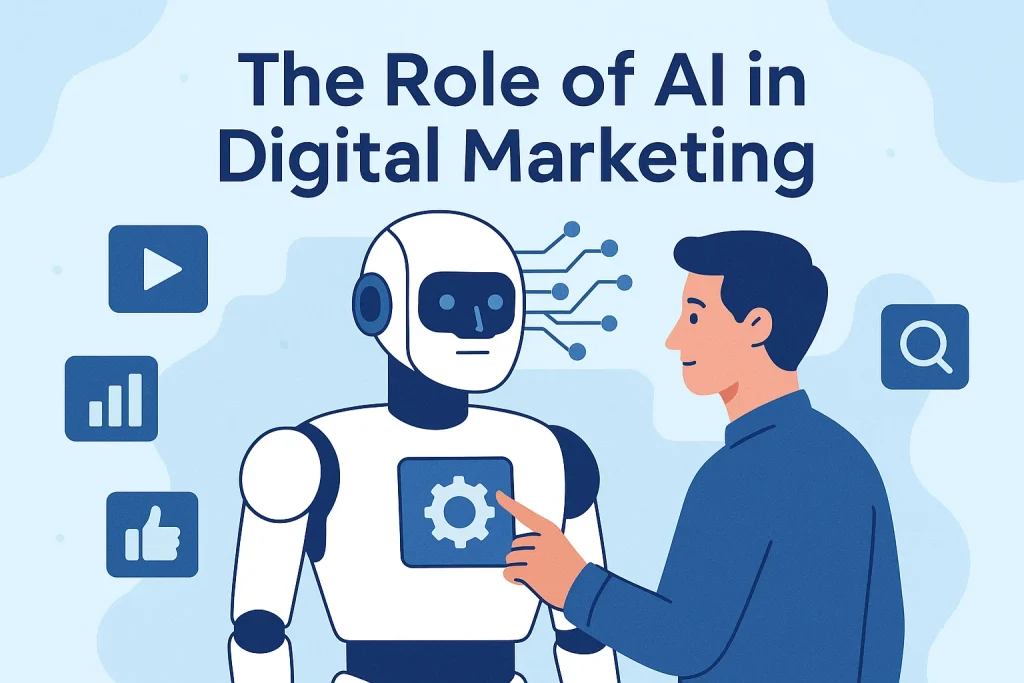
In the fast-paced world of digital marketing, staying ahead of trends and leveraging cutting-edge technologies is crucial for success. One of the most transformative technologies to impact the marketing landscape is Artificial Intelligence (AI). From predictive analytics to personalized content, AI is reshaping how businesses interact with their customers. In this blog, we’ll explore how AI in Digital Marketing is revolutionizing customer engagement and why it’s a game-changer for marketers in 2025 and beyond. What is AI in Digital Marketing? Artificial Intelligence (AI) in digital marketing refers to the use of machine learning algorithms, predictive analytics, natural language processing, and other AI technologies to optimize marketing efforts. AI helps businesses automate processes, improve decision-making, and provide personalized customer experiences. In a digital marketing context, AI assists in customer engagement by providing actionable insights, automating tasks, and creating highly tailored content and experiences. 1. Personalization at Scale Personalization has always been a key element of effective marketing. However, creating tailored experiences for each customer manually can be time-consuming and resource-intensive. This is where AI steps in. AI algorithms analyze vast amounts of customer data, such as browsing history, past purchases, and engagement behavior, to deliver hyper-personalized content and product recommendations. Impact: This level of personalization improves customer satisfaction, drives conversions, and builds stronger customer loyalty. By offering relevant products and services, AI helps businesses engage customers more effectively. 2. Chatbots and Conversational Marketing AI-powered chatbots are changing the way businesses interact with their customers. These AI-driven assistants can engage in real-time conversations, answer questions, guide customers through the sales funnel, and even handle customer support tasks. Impact: AI chatbots improve customer engagement by providing immediate, efficient responses to customer inquiries. This leads to increased customer satisfaction, reduced bounce rates, and higher conversion rates. 3. Predictive Analytics for Smarter Engagement AI-powered predictive analytics helps businesses anticipate customer behavior and tailor their marketing strategies accordingly. By analyzing historical data and customer behavior, AI can forecast what actions a customer is likely to take next—whether it’s making a purchase, abandoning a cart, or engaging with content. Impact: Predictive analytics allows businesses to be proactive in their customer engagement strategies. By anticipating customer needs and behaviors, businesses can tailor their outreach and provide timely, relevant content. 4. Dynamic Content Creation and Optimization Creating relevant, high-quality content is crucial for engaging customers. AI is revolutionizing content creation by helping marketers produce optimized, personalized content that resonates with their audience. AI tools can generate text, images, and even videos based on customer preferences and trends. Impact: AI-powered content creation and optimization ensure that businesses are delivering the right message at the right time. By automating content generation and fine-tuning it based on data, AI improves customer engagement and boosts content performance. 5. AI in Social Media Marketing Social media platforms are a goldmine for customer engagement, but managing social media marketing manually can be overwhelming. AI can help businesses optimize their social media marketing efforts by analyzing trends, monitoring brand sentiment, and automating posts. Impact: AI enhances social media marketing by providing deeper insights into customer sentiment, optimizing content delivery, and automating tedious tasks. This results in better engagement, higher brand awareness, and more effective social campaigns. 6. Enhanced Customer Insights through Data AI’s ability to analyze large volumes of data is one of its most powerful applications in digital marketing. With AI, businesses can gain deeper insights into customer behavior, preferences, and buying patterns. This data can be used to refine marketing strategies and improve customer engagement efforts. Impact: By gaining a better understanding of their customers, businesses can craft more relevant and engaging marketing campaigns, ultimately leading to better customer engagement and higher conversion rates. 7. AI for Email Marketing Optimization Email marketing remains one of the most effective channels for customer engagement, and AI is taking it to the next level. AI can optimize every aspect of email marketing, from segmentation and content creation to delivery timing. Impact: AI-powered email marketing ensures that businesses can send highly personalized and timely emails that resonate with customers, leading to improved engagement, higher click-through rates, and increased conversions. Conclusion: AI is the Future of Customer Engagement in Digital Marketing Artificial Intelligence is no longer just a buzzword—it’s transforming the way businesses engage with customers. From personalized content and product recommendations to predictive analytics and AI-driven chatbots, AI is revolutionizing how businesses create meaningful connections with their customers. As AI continues to evolve, digital marketers will have more tools at their disposal to create highly tailored, data-driven strategies that enhance customer engagement and drive growth. At Speed Dot 360, we specialize in harnessing the power of AI to improve digital marketing strategies, automate processes, and deliver exceptional customer experiences. By integrating AI into your digital marketing efforts, you can stay ahead of the competition and build lasting relationships with your customers. FAQS Q1: How does AI personalize customer engagement?AI personalizes customer engagement by analyzing data such as browsing behavior, purchase history, and demographics to deliver tailored content, recommendations, and offers. Q2: What is predictive analytics, and how does it help digital marketing?Predictive analytics uses AI to analyze customer data and predict future behaviors, such as when a customer is likely to make a purchase. This helps businesses target customers with relevant content and offers at the right time. Q3: How can AI improve social media marketing?AI improves social media marketing by automating tasks like post scheduling, monitoring brand sentiment, analyzing trends, and targeting the right audience with optimized content. Q4: What role does AI play in email marketing?AI optimizes email marketing by personalizing campaigns, determining the best send times, and conducting A/B testing to improve open rates, click-through rates, and conversions. Q5: Can AI really replace human marketers?While AI can automate many tasks and enhance customer engagement, human marketers are still essential for strategic decision-making, creativity, and emotional intelligence in marketing campaigns.
The Benefits of Networking for Small Businesses in 2025

In today’s fast-paced and ever-evolving business landscape, networking for small businesses has become one of the most valuable assets. Whether you’re looking to connect with potential customers, partners, or mentors, networking opens doors to new opportunities, growth, and long-term success. The benefits of networking are even more significant, as the digital and physical business worlds continue to converge. In this blog, we’ll explore the many ways networking can empower small businesses to grow, build brand awareness, foster collaboration, and more. What is Networking for Small Businesses? Networking, at its core, is about creating relationships and establishing connections with people who can offer value to your business. Whether these connections come in the form of potential clients, partners, influencers, or advisors, they can provide valuable insights, resources, and opportunities that would otherwise be difficult to access. In 2025, networking is no longer just about attending events and exchanging business cards—it’s about utilizing digital platforms, attending virtual webinars, collaborating on joint ventures, and building a community of engaged individuals who can help your business thrive. 1. Building Lasting Relationships and Trust One of the most significant advantages of networking is the ability to build lasting, meaningful relationships. For small businesses, trust is key. Your relationships with other business owners, customers, and industry influencers help establish credibility and trustworthiness in your brand. When people trust your business, they are more likely to recommend it to others, work with you, or make a purchase. Effective networking is built on the foundation of mutual respect and support. By engaging with others and showing genuine interest in their goals and needs, you can develop relationships that extend beyond transactional exchanges. For example, by sharing advice, resources, or even business opportunities, you become a trusted partner in others’ success, which often leads to the same in return. 2. Gaining Access to New Opportunities Networking can open the door to numerous business opportunities that you might not have had access to otherwise. Whether you’re looking for clients, strategic partnerships, funding, or valuable business insights, your network can provide the support you need to grow. By connecting with like-minded professionals and business owners, you gain access to opportunities that help your business expand and thrive in new markets. These opportunities can be especially valuable for small businesses. For example, a local restaurant might network with food bloggers and influencers who can promote their restaurant, driving new customers to their doors. Similarly, a B2B service provider might network with larger companies that can become potential clients or partners. In today’s competitive market, the right connections can lead to game-changing opportunities for small businesses. 3. Expanding Your Knowledge and Skill Set Networking is not only about gaining opportunities for your business but also about expanding your own knowledge base. Engaging with others in your industry or field allows you to gain insights into emerging trends, best practices, and new technologies that could benefit your business. Connecting with professionals who have experience in areas outside of your own expertise allows you to expand your skill set and gain new perspectives. For example, you might learn about new marketing tools, financial strategies, or sales techniques that can help you improve your business operations. By attending industry events, webinars, and online communities, you stay ahead of the curve and position yourself as an informed and competitive player in the market. Additionally, networking can expose you to valuable industry reports and case studies that offer practical insights into how other businesses in your niche have overcome common challenges. 4. Boosting Your Business Visibility and Marketing Networking is a cost-effective way to boost your business’s visibility and raise brand awareness. In fact, word-of-mouth marketing is one of the most effective ways to generate leads and drive sales for small businesses. When you network with other entrepreneurs, professionals, and even customers, you increase your chances of being referred to others who may need your products or services. For small businesses in 2025, digital networking platforms like LinkedIn, Twitter, and Instagram provide unique opportunities to amplify brand visibility. Regularly posting updates about your products, services, or business achievements can help attract followers and potential clients who resonate with your brand values. Additionally, engaging in online discussions or contributing to industry-specific forums and groups allows you to establish yourself as a thought leader, further enhancing your business’s reputation and authority. In addition to digital marketing, in-person networking events like conferences, seminars, and local business meetups can also be highly beneficial for generating word-of-mouth referrals. By building relationships in your community, you increase the likelihood of potential customers seeking you out or referring you to others in need of your services. 5. Strengthening Your Reputation and Credibility In the business world, reputation is everything. Networking allows small businesses to establish themselves as credible and trustworthy entities within their industry. By attending industry events, engaging in collaborations, and offering advice or resources to others, you position yourself as an expert in your field. Over time, this credibility enhances your business reputation, making it easier to attract customers, clients, and partners. For instance, speaking at industry conferences or contributing to industry publications allows you to build credibility in your niche. As others recognize your expertise and authority, they are more likely to trust you with their business needs. Networking also provides opportunities for partnerships and collaborations with respected professionals in your field, which can help elevate your reputation even further. 6. Unlocking Opportunities for Collaboration and Innovation One of the most exciting aspects of networking is the opportunity for collaboration and innovation. By connecting with other businesses, you open the door to potential partnerships that can help you expand your offerings, reach new audiences, or solve complex challenges. Collaboration often leads to innovative ideas, new products, or services that might not have been possible through individual efforts. For example, two small businesses might collaborate on a joint marketing campaign or co-host an event to raise awareness for their respective brands. These partnerships create a win-win scenario for both businesses, driving new
AI in Marketing: How It Can Revolutionize Your Marketing Efforts
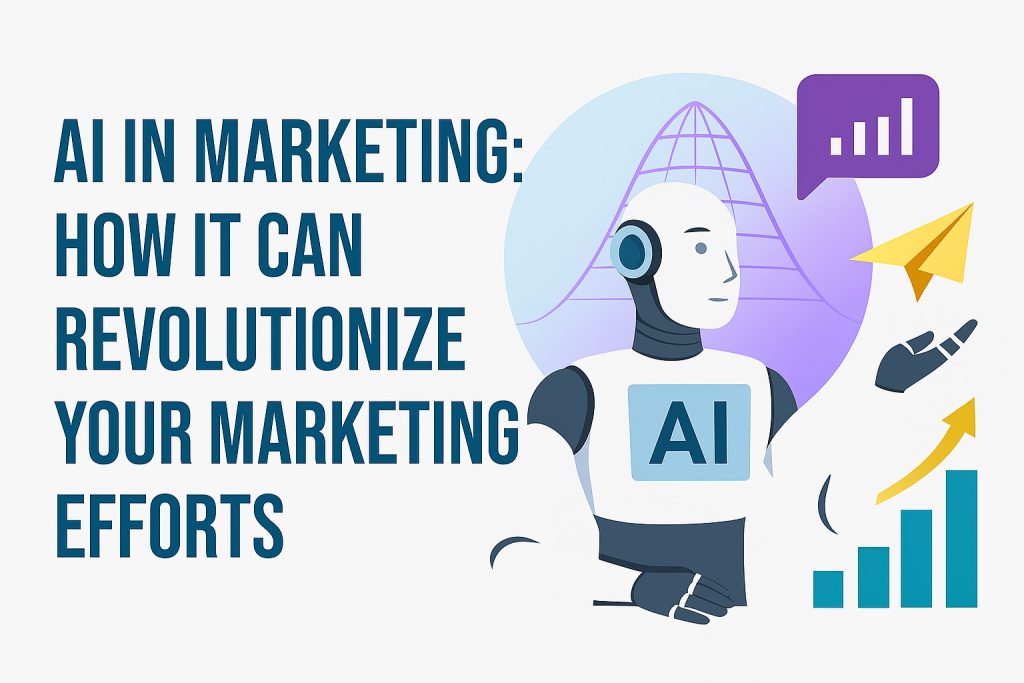
In recent years, artificial intelligence (AI) has rapidly advanced, and it’s no surprise that it’s now making a massive impact in the marketing world. AI’s ability to analyze vast amounts of data, automate repetitive tasks, and provide insights that were previously unattainable is transforming the way businesses approach marketing. From improving customer targeting to enhancing personalization and boosting efficiency, AI is revolutionizing marketing efforts across industries. In this blog, we’ll explore how AI is reshaping marketing and why integrating it into your strategy can give you a competitive edge. What is AI in Marketing? AI in marketing refers to the use of artificial intelligence technologies and algorithms to improve and automate marketing processes. It involves leveraging machine learning, predictive analytics, natural language processing, and other AI tools to enhance decision-making, optimize campaigns, and provide personalized experiences to customers. AI is not just for tech giants anymore—businesses of all sizes are beginning to harness its power to drive marketing success. The Benefits of AI in Marketing 1. Enhanced Customer Targeting and Segmentation One of the most significant ways AI is changing marketing is through improved customer targeting. AI algorithms can analyze vast amounts of customer data, including purchase history, browsing behavior, and demographic information. By processing this data, AI can segment customers into specific groups, allowing businesses to target the right audience with the right message at the right time. 2. Personalization at Scale Personalized marketing has been a buzzword for years, but AI takes it to a whole new level. AI-powered tools can deliver hyper-personalized content, product recommendations, and messaging based on individual customer preferences. Whether it’s through email campaigns, social media ads, or website content, AI allows businesses to create tailored experiences for each customer, driving engagement and improving conversion rates. 3. Predictive Analytics for Better Decision-Making AI-powered predictive analytics allows businesses to forecast future customer behavior and trends. By analyzing historical data, AI can predict what customers are likely to do next—whether it’s making a purchase, abandoning their cart, or engaging with content. These insights help marketers make data-driven decisions, allocate resources more effectively, and improve the overall marketing strategy. 4. Improved Customer Experience with Chatbots and Virtual Assistants AI-driven chatbots and virtual assistants are becoming increasingly popular for enhancing customer service. These tools use natural language processing to understand and respond to customer inquiries in real time. By providing instant responses to common questions, chatbots improve the customer experience while freeing up human agents to handle more complex issues. 5. Automation of Repetitive Tasks AI can automate various time-consuming marketing tasks, such as data entry, content creation, social media scheduling, and customer segmentation. By automating these tasks, businesses can save time and resources, allowing marketing teams to focus on more strategic and creative efforts. AI-powered automation tools can also optimize marketing campaigns in real-time, making adjustments based on performance data. 6. Better Insights and Reporting AI’s ability to analyze vast amounts of data quickly enables marketers to gain better insights into campaign performance. From tracking user engagement to measuring ROI, AI-powered analytics tools provide real-time reporting and insights that allow businesses to fine-tune their marketing efforts for better results. By having access to these insights, companies can optimize their strategies and achieve more impactful results. 7. Cost Efficiency While AI may require an upfront investment, it can save businesses significant costs in the long run. By automating repetitive tasks, optimizing campaigns, and improving targeting, AI helps businesses achieve better results without increasing their marketing budget. Moreover, AI reduces the risk of human error and ensures marketing efforts are more effective, leading to better ROI. How AI Can Enhance Your Marketing Strategy 1. AI-Driven Content Creation AI can assist in content creation by generating blog posts, social media updates, product descriptions, and more. Tools like natural language generation (NLG) use AI to create written content that is engaging and relevant to the target audience. While AI content tools aren’t replacing human writers, they can help marketers generate ideas, optimize content for SEO, and streamline content production processes. 2. AI-Powered Email Campaigns AI can optimize email marketing campaigns by analyzing user behavior and predicting the best times to send emails. AI tools can also personalize email content based on recipient preferences and past interactions. For instance, an e-commerce website might send personalized product recommendations to customers based on their previous purchases, enhancing the customer experience and increasing sales. 3. Social Media Marketing and AI Social media marketing is another area where AI shines. AI tools can analyze social media engagement data to identify trends, monitor brand sentiment, and track customer feedback. AI can also automate social media posting, ensuring that content is published at optimal times. Additionally, AI can help identify influencers and brand advocates who can amplify your marketing efforts. 4. Dynamic Pricing Models AI can enable dynamic pricing models that adjust the price of products or services based on real-time data. For instance, AI can analyze competitor prices, customer demand, and market conditions to recommend the optimal price for your products. This dynamic approach ensures your business stays competitive and maximizes revenue. 5. Voice Search Optimization With the rise of voice-activated devices like smartphones and smart speakers, voice search optimization is becoming essential for businesses. AI-powered voice recognition technologies are helping marketers optimize their content for voice search queries. By understanding natural language and context, AI ensures that businesses’ content ranks well in voice search results. How AI Can Boost Marketing ROI AI’s ability to improve targeting, optimize campaigns, and automate repetitive tasks translates into better marketing ROI. By leveraging AI, businesses can: With AI, marketers can achieve a higher return on their marketing investments and maximize the impact of their campaigns. Conclusion AI is no longer just a futuristic concept—it’s already revolutionizing the way businesses approach marketing. By leveraging AI’s capabilities, businesses can improve targeting, create personalized experiences, automate tasks, and make data-driven decisions that boost marketing performance. The integration of AI into your marketing strategy is not just an advantage; it’s quickly becoming a
Utilizing Webinars and Demos as Lead Generation Tools for Your New Software
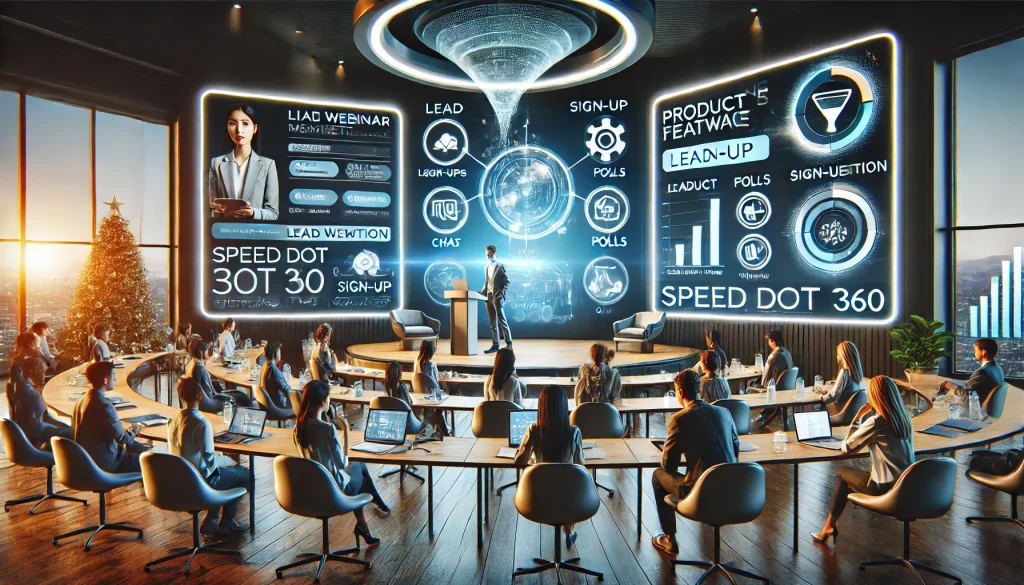
When launching a new software product, generating qualified leads can be one of the most challenging aspects of your marketing strategy. However, you may perfectly attract, engage & convert prospects with the right tools and tactics. One of the most powerful strategies to generate leads for newly developed software is through Webinars and Demos as Lead Generation Tools. These two tools offer a unique and interactive approach to lead generation. Webinars provide an opportunity to educate many prospects, while demos allow for more personalized one-on-one engagement. Together, they can help you build relationships with potential customers, showcase the value of your software, and ultimately drive conversions. Let’s find out how to use webinars & demos as lead generation tools for your new software. The Power of Webinars in Lead Generation Webinars are to capture attention, arrange valuable content, & engage with your possible customers. Unlike traditional marketing methods, webinars allow direct interaction with your audience, making them an excellent platform for educating and nurturing leads. Why Webinars Work for Software Lead Generation Best Practices for Hosting Successful Webinars Leveraging Product Demos for Lead Generation Product demos offer a more personalized way to connect with leads. Unlike webinars, which can reach a broader audience, demos are typically one-on-one sessions that provide a tailored experience based on the prospect’s unique needs. They allow you to dive deeper into how your software can address specific pain points, increasing the likelihood of conversion. Why Product Demos Matter for Software Lead Generation Tips for Conducting an Effective Product Demo Combining Webinars and Demos for Maximum Lead Generation Impact While webinars and product demos are powerful lead generation tools, combining them can be even more effective. Here’s how: Conclusion Webinars & product demos are the two major lead generation strategies for any software. By leveraging these tools, you can engage with prospects meaningfully, showcase your software’s value, and ultimately drive conversions. Whether hosting a large-scale webinar or conducting a personalized demo, these strategies will help you build trust, establish credibility, and turn leads into loyal customers. At Speed Dot 360, we understand the importance of engaging with your audience in real-time. If you want to enhance your software’s lead generation strategy, we can help you implement successful webinar and demo strategies tailored to your unique needs. Start using webinars and demos to boost your lead generation efforts today and see the difference they can make for your business. FAQs 1. Why are webinars an effective lead generation tool? Answer: Webinars provide real-time interaction with prospects, allowing you to showcase your software’s value, answer questions, and build trust. They connect directly with your audience, making converting them into qualified leads easier. 2. How do product demos help generate software leads? Answer: Product demos offer a personalized experience, allowing you to address specific pain points and showcase the software’s benefits in real-time. They help build trust, engage prospects, and increase the likelihood of conversion. 3. How long should a webinar or demo last? Answer: Webinars should typically last between 30 and 60 minutes, while product demos should be around 15 to 30 minutes, depending on the complexity of the software. 4. What’s the best way to promote my webinar or demo? Answer: Promote your webinar or demo through email marketing, social media, paid ads, and your website. Ensure to highlight the key benefits of attending and create a sense of urgency with limited spots or exclusive content. 5. Should I offer a free trial after a demo or webinar? Answer: Yes, offering a free trial after a demo or webinar is an excellent way for leads to experience your software firsthand. It provides them with a risk-free way to explore your product and increases the chances of conversion.
AI-Driven Personalization for Offers & Ads: Transforming Digital Marketing with Speed Dot 360
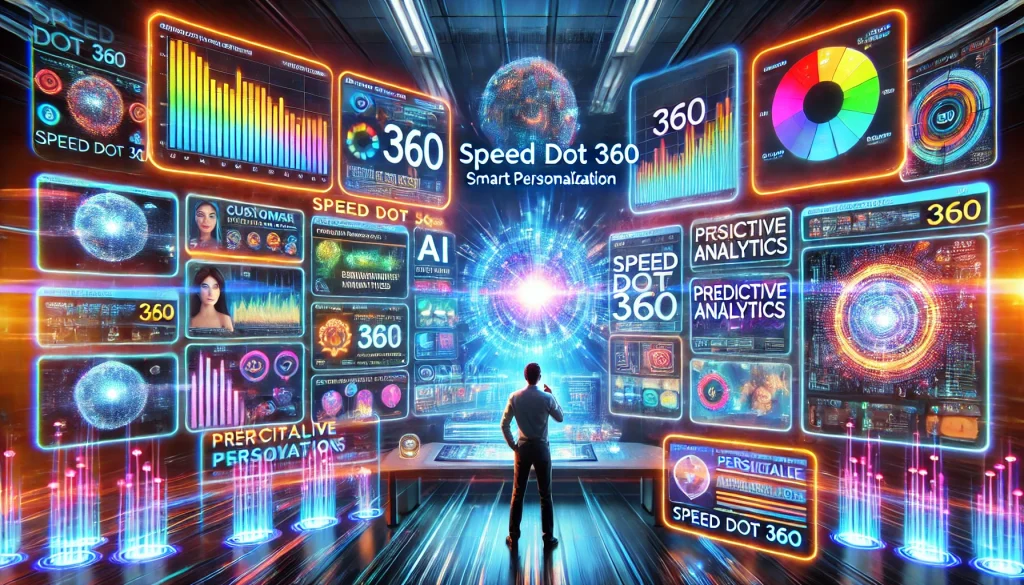
Customers expect experiences tailored to their unique interests, preferences, and behaviors in today’s crowded digital landscape. Generic offers and one-size-fits-all ads don’t cut it anymore. Businesses must deeply understand individual customers and engage them with highly relevant, timely, and meaningful messages. This is where AI-driven personalization has turned out to be the biggest game-changer. With AI-powered personalization for offers and ads, brands can go beyond basic targeting and deliver marketing experiences that feel truly individualized. This technology combines big data analytics, machine learning (ML), and predictive intelligence to ensure every ad, discount, or recommendation resonates with the right person at the right time. As a forward-thinking digital partner, Speed Dot 360 implements cutting-edge solutions, enabling businesses to stay competitive in the ever-evolving marketing space. Let’s explore how AI-driven personalization reshapes offers and ads and why adopting this approach through Speed Dot 360 can help your brand stay ahead. What is AI-Driven Personalization? AI-driven personalization uses artificial intelligence to analyze customer data, predict behavior, and deliver hyper-targeted content, offers, and ads across digital channels. Unlike traditional segmentation methods that rely on demographic information alone, AI personalization uses real-time behavioral data, past interactions, and predictive analytics to deliver tailored experiences. Some standard personalization techniques powered by AI include: The result? Ads and offers that feel personal, increase engagement, and drive conversions. Why Businesses Can’t Ignore AI Personalization Consumer expectations have changed dramatically. According to multiple industry studies, over 70% of customers expect personalized experiences when interacting with brands, and 90% of marketers report measurable business improvements when personalization is executed effectively. Here are some key reasons why businesses can no longer afford to ignore AI-driven personalization: 1. Improved Customer Experience AI enables brands to deliver timely, relevant, and valuable content, which enhances the overall customer experience. People respond better when they feel understood. 2. Higher Conversion Rates Customized recommendations & offers have been shown to enhance conversions perfectly. Personalized ads reduce noise and make offers more appealing. 3. Better ROI on Ad Spend Instead of wasting money on irrelevant impressions, AI ensures ads reach users most likely to convert, maximizing the return on every marketing dollar. 4. Real-Time Adaptability AI can analyze user interactions in real time and adjust campaigns instantly for maximum impact. 5. Competitive Advantage Early adopters of AI personalization stand out in the market, gaining loyalty and long-term customers before competitors catch up. How AI Personalization Works: Behind the Scenes AI-driven personalization relies on several advanced technologies working together. Let’s break it down: This entire cycle runs continuously, allowing businesses to adapt campaigns on the fly. AI Techniques Powering Personalized Ads & Offers AI uses several powerful techniques to achieve personalization at scale: Real-Time Data: The Secret to AI Personalization Success Real-time data is the backbone of effective AI-driven personalization. It ensures that offers and ads remain contextually relevant at all times. For instance: This level of instant personalization is impossible with traditional methods but routine for AI-powered systems. Industry Trends in AI-Driven Personalization AI personalization is improving with several trends that are shaping its future: How Speed Dot 360 Helps Businesses Implement AI-Driven Personalization At Speed Dot 360, we understand that implementing AI-driven personalization can feel overwhelming for businesses. That’s why we offer end-to-end solutions to make the transition seamless: With our expertise, businesses can maximize ROI, improve customer engagement, and stay competitive in the digital landscape. Case Example: E-Commerce Personalization An e-commerce brand partnered with Speed Dot 360 to deploy AI personalization across its marketing channels. Within three months: Real-time personalized recommendations, dynamic email offers, and AI-optimized ad placements drove this success. Conclusion AI-driven personalization for offers and ads isn’t just a marketing trend—it’s the future of customer engagement. Businesses that embrace this technology will enjoy higher conversions, better customer relationships, and improved ROI. Partnering with Speed Dot 360 ensures you stay ahead with cutting-edge AI tools, expert strategies, and measurable results. FAQs 1. What is AI-driven personalization for offers and ads?It uses AI technologies like machine learning and predictive analytics to deliver highly relevant ads and offers tailored to customers’ behavior and preferences. 2. How does AI improve ad performance?By analyzing data and predicting user behavior, AI ensures ads reach the right people at the right time with the right message. 3. Is AI personalization suitable for small businesses?Even small businesses can benefit from affordable AI tools that boost engagement and conversions. 4. How does Speed Dot 360 help with AI personalization?We offer end-to-end AI solutions for data integration, campaign optimization, and personalized content creation. 5. What industries can benefit from AI-driven personalization?E-commerce, finance, healthcare, travel, and virtually any industry aiming to enhance customer experiences can benefit.
Generative Engine Optimization (GEO): Ensuring Your Brand is Cited by AI
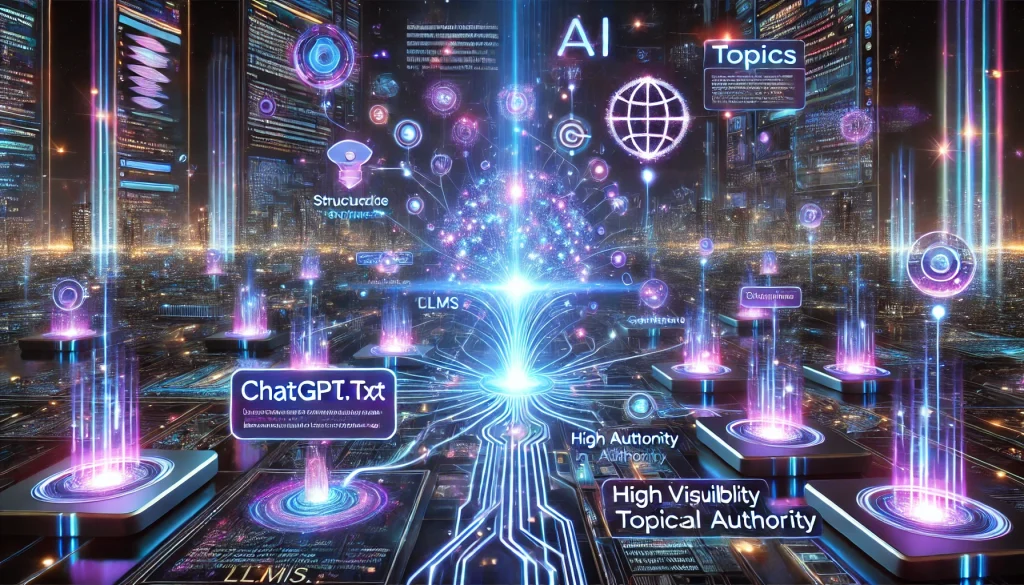
As generative AI tools become mainstream, businesses face a new challenge: ensuring their brand appears when AI systems like ChatGPT, Google Gemini, and other large language models (LLMs) generate content. The old rules of search engine optimization (SEO) are no longer enough because search engines are no longer the only way people get information. Today, Generative Engine Optimization (GEO) is emerging as the next big thing in digital marketing, helping brands secure visibility in AI-generated summaries, answers, and content recommendations. This guide explores everything businesses need to know about GEO—what it is, why it matters, and the practical steps you can take to ensure your brand is cited when AI delivers results to users worldwide. What is Generative Engine Optimization (GEO)? Generative Engine Optimization, or GEO, refers to optimizing content so that generative AI systems recognize, trust, and reference it when producing answers or creating content. Unlike typical SEO, which targets the ranking in search results, GEO plans to build topical authority, AI-centric signals and structured content, allowing AI modes to: In simple terms, while SEO gets you visibility on Google or Bing, GEO helps your brand stay visible in the AI-powered digital future. Why GEO Matters in 2025 and Beyond The digital landscape is evolving fast. Millions of people now rely on AI-powered assistants for product recommendations, research, and answers to everyday questions. That means: Ignoring GEO today might be the same as neglecting SEO in the early 2000s—a missed opportunity that competitors will capitalize on. Key Strategies for Effective Generative Engine Optimization To make GEO successful, you need to adapt strategies designed for AI-powered methods rather than just search engines. Let’s go through the following significant steps: 1. Use llms.txt to Guide AI Models Just as sites use robots.txt to guide search engines, LLMs.txt files are made to communicate with the large language models (LLMs). By generating this file, you can: Adding an llms.txt file ensures AI tools understand your brand’s content structure and citation policies. 2. Implement AI-Friendly Metadata Metadata is information embedded in your content that helps search engines and AI models understand context. For GEO, you need to: This makes it easier for AI tools to recognize your content as authoritative and reliable. 3. Structured Data and Schema Markup Generative AI systems prefer structured, organized information. Schema markup guides AI about the specific meaning of your content, not just what it reveals. For instance: The more context you ensure, the easier it is for AI to reference your brand perfectly. 4. Build Clear Topical Authority AI tools rely on credible sources when it is to create answers. To become one: When AI sees your brand as a trusted expert in a particular subject area, it is likelier to cite you in responses. 5. Create AI-Friendly Content Formats Generative AI prefers concise, well-structured information. That means: The easier it is for AI to read your content, the more likely it will appear in AI-generated answers. 6. Monitor AI Citations and Mentions GEO doesn’t end with publishing content—you need to track when and how AI tools reference your brand. This data helps you fine-tune your content strategy. Future Trends in Generative Engine Optimization The field of GEO is still new, but here’s what we can expect in the coming years: How Businesses Can Get Started with GEO If you’re new to Generative Engine Optimization, here’s a roadmap: Conclusion Generative Engine Optimization isn’t just a passing trend—it’s the future of digital visibility. As AI tools increasingly shape how users find information, businesses that optimize for AI citations and discoverability will have a significant competitive advantage. By implementing llms.txt, using structured data, building topical authority, and publishing AI-friendly content, your brand can stay ahead in the evolving digital era. FAQs 1. How is GEO different from traditional SEO?GEO optimizes content for AI-generated results, while SEO is all about improving a ranking in search results on all the search engines. 2. Do all businesses need to adopt GEO strategies?Yes, especially brands that rely on digital visibility for leads, sales, or thought leadership should start investing in GEO. 3. What is llms.txt, and why is it important?llms.txt is a file that communicates with AI models, telling them how to access and cite your content. 4. How soon will GEO become mainstream?With the rapid adoption of AI tools in 2025, GEO is expected to become a core part of digital marketing within the next 1–2 years.5. Can GEO improve website traffic directly?Indirectly, yes. If AI tools consistently mention your brand, users will search for you directly or visit your site after seeing your brand cited as an authority.
How to Attract and Convert Website Visitors through Content Marketing
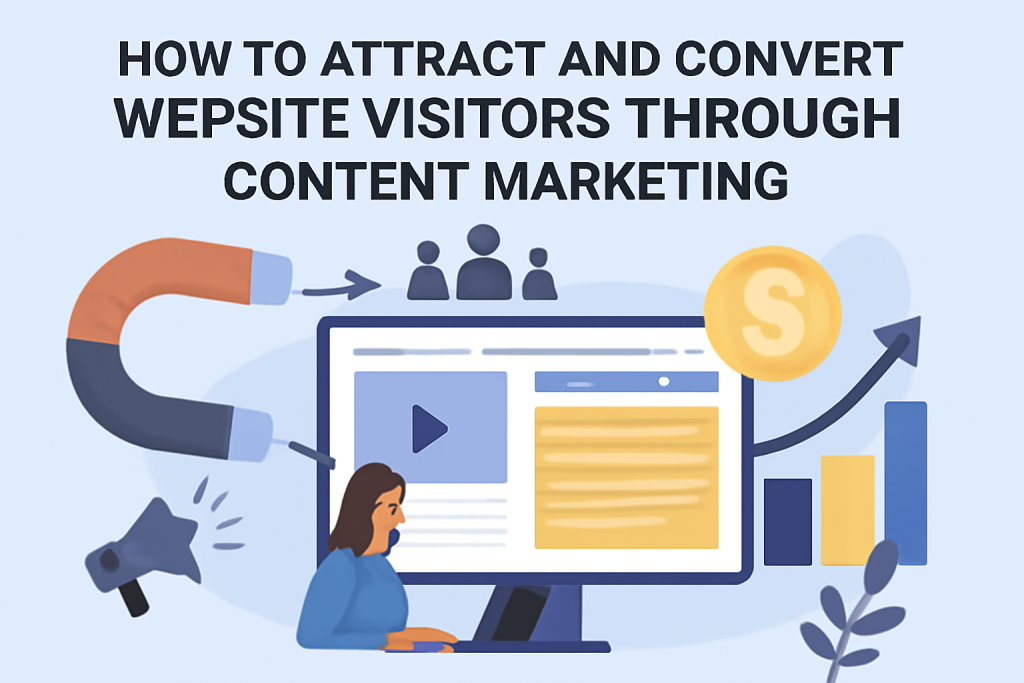
In the ever-evolving world of digital business, content isn’t just king—it’s your brand’s most reliable salesperson. At Speed Dot 360, we believe content marketing is not just a buzzword; it’s a strategic powerhouse. It acts as a bridge to seal the gap amid curiosity and conversion. From insightful blogs to interactive quizzes and storytelling-infused videos, great content draws people in and nurtures trust. If you’re struggling to turn traffic into paying customers, you’re not alone. But with the right approach—including targeted keyword research services—content marketing can help you create a funnel that not only attracts but also converts with purpose and precision. What Is Content Marketing and Why Does It Matter? Content marketing is the procedure of planning, creating, distributing, and managing content to reach your ideal audience and convert them into loyal customers. Instead of selling directly, content marketing focuses on providing value, solving problems, and building a relationship with your audience. This value-based approach is more effective than traditional advertising because people engage with brands that educate and inspire them, not just those who interrupt their feed with a product pitch. Mapping Content to the Buyer’s Journey Every piece of content should speak to a stage in your customer’s decision-making process. That’s why aligning your strategy with the buyer’s journey is crucial: This journey-based content strategy ensures you’re not just speaking to everyone but speaking to the right person at the right time, with the right message. Types of High-Converting Content Your content toolkit should be diverse. Here are the formats delivering results in 2025: SEO: Fuel for Your Content Engine You can write the most insightful blog post in the world, but if no one sees it, it won’t convert. This is where SEO optimization services come into play. From researching trending keywords to optimizing meta descriptions, every technical detail adds up. Start with effective keyword research services to find terms your ideal customers are actually searching for. Then, weave those keywords naturally into your content—headlines, subheads, body copy, and alt-text. And don’t forget about backlinks. Getting your content linked from high-authority websites signals credibility to search engines and boosts ranking power. Consider integrating link building services into your broader strategy. Attracting the Right Visitors: Proven Strategies Attracting traffic starts with visibility. Here are key ways to draw users to your website: Turning Traffic Into Leads Once visitors land on your site, your content’s job is far from done. It must inspire action. Use every interaction point as an opportunity to move users one step closer to becoming a lead or customer. The Power of Email Marketing Email marketing campaigns remain a powerhouse for nurturing leads over time. Use your newsletter to deliver handpicked blog articles promotional offers, or invite readers to upcoming webinars. Segment your list according to your user behavior or interests to personalize messaging and boost engagement. Combining smart email with content ensures your brand remains top-of-mind throughout the decision-making process. Brand Storytelling: The Emotional Connection People don’t just buy products—they buy stories, values, and experiences. Brands with compelling narratives cut through the noise and stay memorable. Invest in brand storytelling solutions that resonate with your audience. Your “why” matters. From an about page to customer testimonials, let your brand voice come alive. By weaving storytelling into your content—from blogs to videos—you humanize your message, making your business more relatable and trustworthy. Measuring What Matters You can’t improve what you don’t measure. Here are key metrics to track: Utilize tools like Google Analytics, HubSpot, and SEMrush to analyze performance and regulate your strategy accordingly. Branding & Strategy: The Foundation for Long-Term Growth Finally, don’t treat content marketing as a siloed effort. Your success hinges on a well-rounded approach that aligns with broader branding & strategy initiatives. Strategic alignment ensures every piece of content not only attracts but also reflects the values and vision of your business. Final Thoughts Content marketing in 2025 is about connection, credibility, and conversion. Whether you’re building blog funnels, running email marketing campaigns, investing in SEO optimization services, or crafting your brand narrative through brand storytelling solutions, remember: value-first always wins. At Speed Dot 360, we specialize in helping businesses create and execute data-driven content strategies that turn visitors into leads—and leads into loyal customers. Are you ready to grow your business with content that truly converts?
Checklist for Marketing Audit for Roofers: Boost Leads, Visibility & ROI
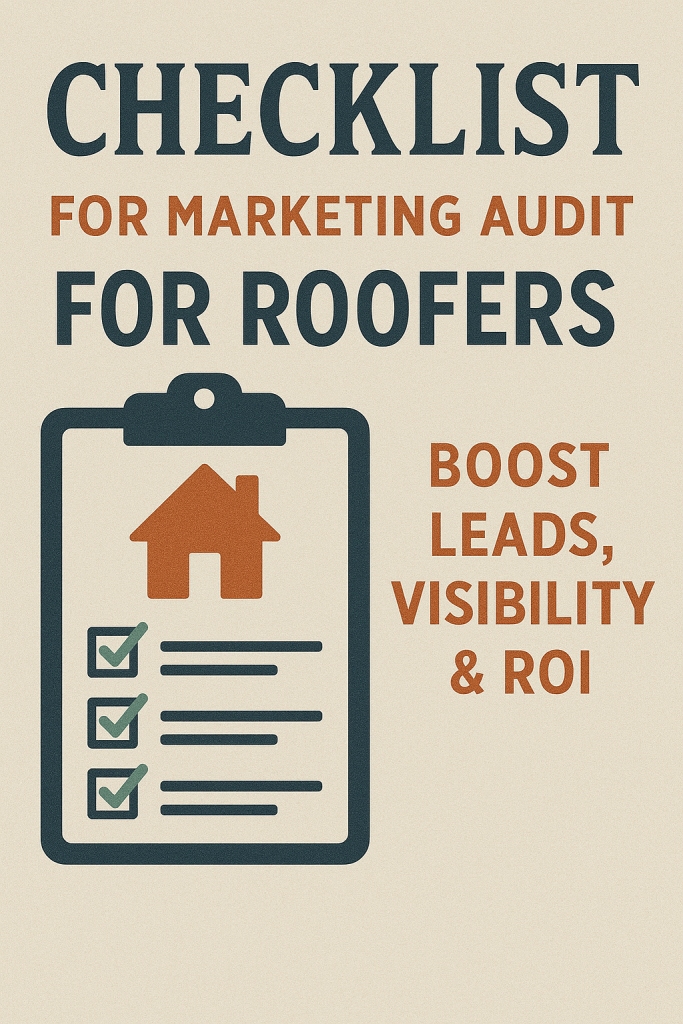
In today’s saturated digital landscape, roofing companies must do more than just “show up online.” To grow leads, close more jobs, and gain local dominance, you need a strategic and measurable approach. That’s where a well-structured marketing audit comes into play. Whether you’re working with a local SEO agency or managing marketing in-house, conducting a thorough audit will help identify gaps, enhance performance, and align your efforts with real business goals. This guide walks you through the essential checklist every roofer needs to evaluate marketing effectiveness—from SEO and content to advertising and conversion paths. 1. Define Your Marketing Goals Before diving into audits, establish clear, measurable goals. Are you trying to generate more leads? Rank higher on Google? Improve your online reputation? Your marketing audit will be most effective if it’s tied to specific KPIs such as: 2. Evaluate Your Branding and Online Reputation Your brand is your promise to customers—and consistency is key. Roofing is a high-trust industry. That’s why a strong, visible, and reputable brand is essential for converting leads. Audit checklist: ORM plays an important role in both customer conversion and SEO optimization services. 3. Conduct a Website & Technical SEO Audit Your website is your 24/7 salesperson. It needs to be fast, user-friendly, and built to convert. A technical SEO audit ensures that search engines can crawl, index, and rank your site in the best possible manner. Key technical areas to audit: Tools like Google Search Console, SEMrush, and Screaming Frog can help identify technical issues that hurt rankings. 4. Review On-Page SEO Strategies On-page optimization is where you control the keywords, structure, and relevance of your content. A strong on-page SEO strategy ensures your site speaks the language of users and search engines. Audit questions to ask: Well-executed on-page SEO strategies increase visibility, improve user experience, and ultimately drive more qualified traffic. 5. Strengthen Off-Page SEO Solutions While on-page SEO builds a solid foundation, off-page SEO solutions help you gain authority in Google’s eyes through backlinks, local citations, and brand mentions. Key off-page audit items: Use tools like Ahrefs or Moz to analyze your backlink profile and eliminate toxic links. 6. Analyze Content Marketing Effectiveness Roofers who educate their customers with useful content build trust and stay top-of-mind. Blog articles, FAQs, and project showcases can attract and nurture leads when optimized well. Content audit checklist: Great content also fuels your email, SEO, and social media strategies. It’s the engine that powers long-term growth. 7. Review Email Marketing Campaigns Not all roofing leads are ready to convert immediately. That’s why email marketing campaigns are so effective—they nurture leads over time and drive repeat business. Audit your email efforts by reviewing the following: Whether it’s a monthly newsletter or post-project follow-up, email keeps your brand top-of-mind and builds long-term customer loyalty. 8. Audit Paid Advertising & PPC Campaigns Are your Google Ads and Facebook campaigns bringing in qualified roofing leads—or just eating up your budget? Checklist for PPC audit: Properly audited and optimized ads can dramatically improve cost-per-lead and ROI. 9. Review Lead Tracking & CRM Systems It’s not enough to drive traffic—you need to know where leads come from and how they convert. A CRM ensures that no opportunity falls through the cracks. Audit points: Lead tracking and attribution help roofing contractors make informed budgeting decisions. 10. Evaluate Social Media Presence Social media might not be your #1 lead driver, but it’s essential for credibility and community engagement—especially for local roofers. Audit your social media by asking: Social proof matters. Homeowners want to see that you’re active, professional, and relatable. 11. Competitor Comparison Finally, compare your performance to the top roofing contractors in your area. This gives you a sense of where you stand—and where you can gain ground. Use competitive research tools to analyze: A marketing audit isn’t complete without knowing how you stack up. 12. Work With the Right Partner A DIY audit can go a long way—but having experts like SpeedDot360 in your corner takes things further. From professional technical SEO audits to custom email marketing campaigns, we help roofers uncover blind spots, fix inefficiencies, and scale with precision. Whether you’re a startup contractor or an established roofing company, SpeedDot360 offers tailored solutions for lead generation, local visibility, and long-term growth. Conclusion A successful roofing business starts with a powerful marketing foundation. By following this marketing audit checklist, you’ll uncover actionable insights to boost traffic, conversions, and your bottom line. Regular audits—ideally every 6 to 12 months—will keep your strategy fresh, focused, and ahead of the competition. Don’t just spend money on marketing. Make sure every dollar is working as hard as you do on the roof. Ready to unlock the full potential of your roofing marketing? Contact SpeedDot360 today for a free consultation and start building a smarter, results-driven marketing strategy.




